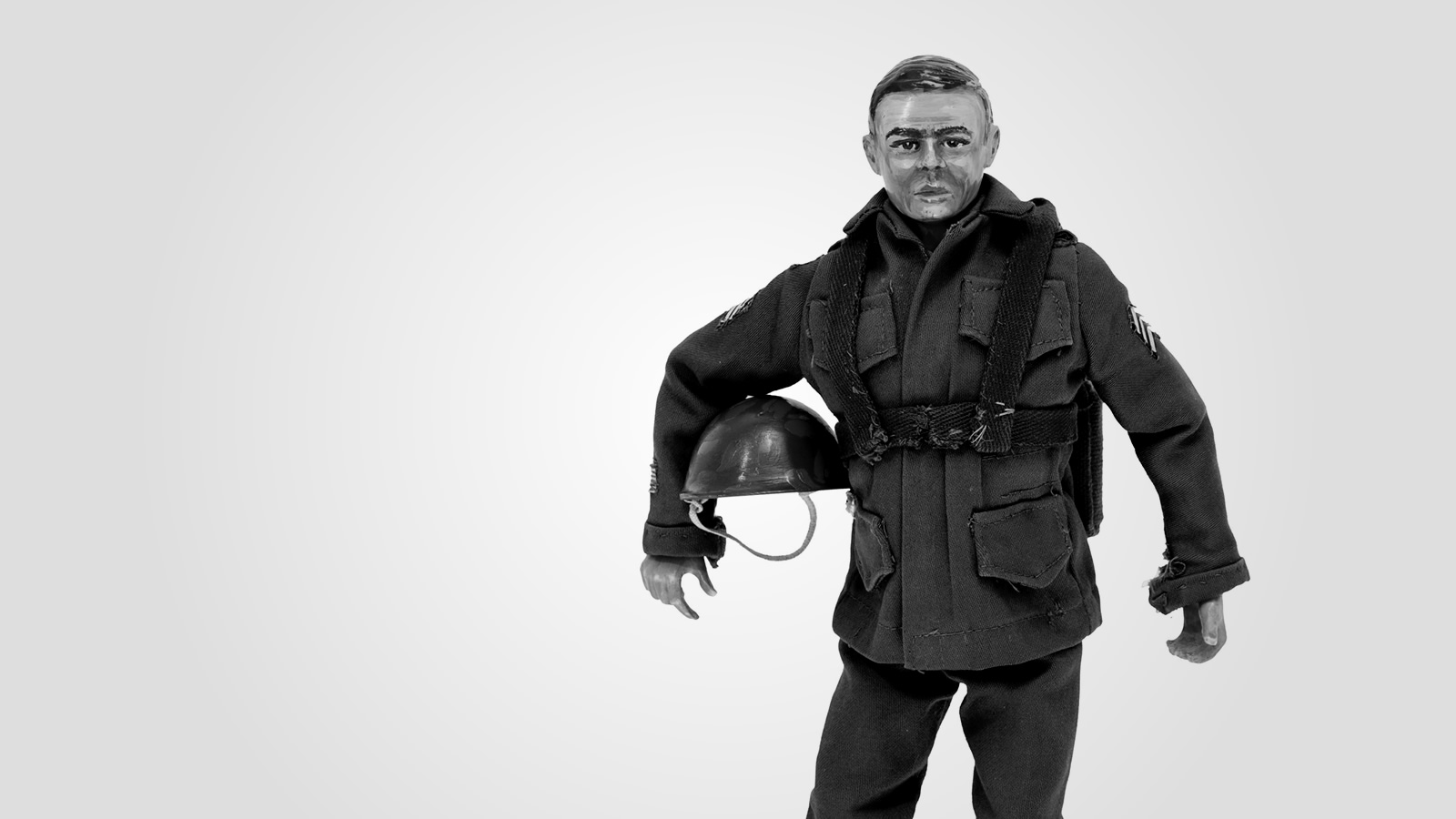It’s hard to say which is more absurd: the 1985 animated television series G.I. Joe: A Real American Hero, or the new mega-movie G.I. Joe: The Rise of Cobra. We’ll decide after a quick primer.
Hasbro is a big American toy company — only rival Mattel is larger. Hasbro sells Monopoly, Scrabble, Pictionary, Clue, Trivial Pursuit and dozens of other household brands — Tonka, Tinkertoys, Nerf, Mr. Potato Head, Play-Doh, Transformers and so on. The people who run Hasbro are very, very rich.
In 1963, jealous of Mattel’s success with Barbie, Hasbro launched a line of 12-inch soldier dolls for boys — Action Soldier, Action Sailor, Action Pilot and Action Marine (hence action figure). The original G.I. Joes flew off the shelves until America flew into Laos and Cambodia — preventing both Hasbro and the White House from selling war for the next decade-and-a-half.
G.I. Joe redeployed in 1985 with smaller molds and smarter marketing (to be copied by George W. Bush after 9/11) — now they were an elite international force defending “human freedom against a ruthless terrorist organization.” There were comic books and a TV show, G.I. Joe: A Real American Hero, which ran weekdays on the networks. (Washington prefers to demonize al-Qaida in prime-time.) Once again, Hasbro couldn’t stamp the plastic figurines fast enough.
A Real American Hero was everything the rest of the world (that’s us!) dislikes about Americans — loud, simplistic, disingenuous and culturally tone-deaf. For instance, the ethnic-cleansing names for some of the white characters — Cutter, Torch and Sgt. Slaughter — juxtaposed with the Native American Joe, code-named Spirit (what else?), who sported braids, epigrammatic English and a pet eagle, Freedom. The Joes were not scared high-school dropouts of all races from low-income towns (like the real American “heroes”), but fearless, steroid-pumped Aryan musclemen.
Of course, racist war propaganda will only entertain children for so long. The American Hero line was retired in 1994. Which brings us to Lorenzo di Bonaventura, Hasbro’s Hollywood honcho, the man responsible for the two Transformers movies just past, G.I. Joe: The Rise of Cobra right now, and millions of toy sales in the future.
The Rise of Cobra can best be described as a wall of noise and sound for people who like to bang their heads into walls, transporting a team of Joes from a green-screen Sahara Desert to a green-screen underwater base to a green-screen North Pole to, well, it doesn’t even matter. Channing Tatum, who plays Duke, defends the movie’s awfulness this way: “It’s a huge, 170-million-dollar movie. It’s just a big, kid sort-of driven film.” Oh. Okay, then. Paramount, who made and promoted the movie, refused to even screen the film for American critics. It’s as if your husband said you didn’t look fat, and then traded the car for a forklift.
To answer the absurdity question, the movie is worse, even though in one episode of the TV show, a dog saves the Joes by using his paws to pump a handcar out of a mineshaft.
G.I. Joe: The Rise of Cobra centers around a swarm of nano-bug-things that can eat a city. Yes, you read that right. It doesn’t spoil anything to tell you they try to eat Paris. There are costumed freaks trying to spill the bugs — the Baroness, Storm Shadow, the Doctor — and costumed freaks trying to kill the bugs — Duke, Ripcord, Scarlett, Snake Eyes and Heavy Duty. They fight — in the air, on the ground, under the water. Nobody really wins, except Hasbro. Nobody really loses, except us.
All that’s left to say is: Go, Joe. Please go.
- GI Joe - The Rise of Cobra
- Directed by Stephen Sommers
- With Channing Tatum, Marlon Wayans and Sienna Miller
- 118 min
- Action, Adventure
